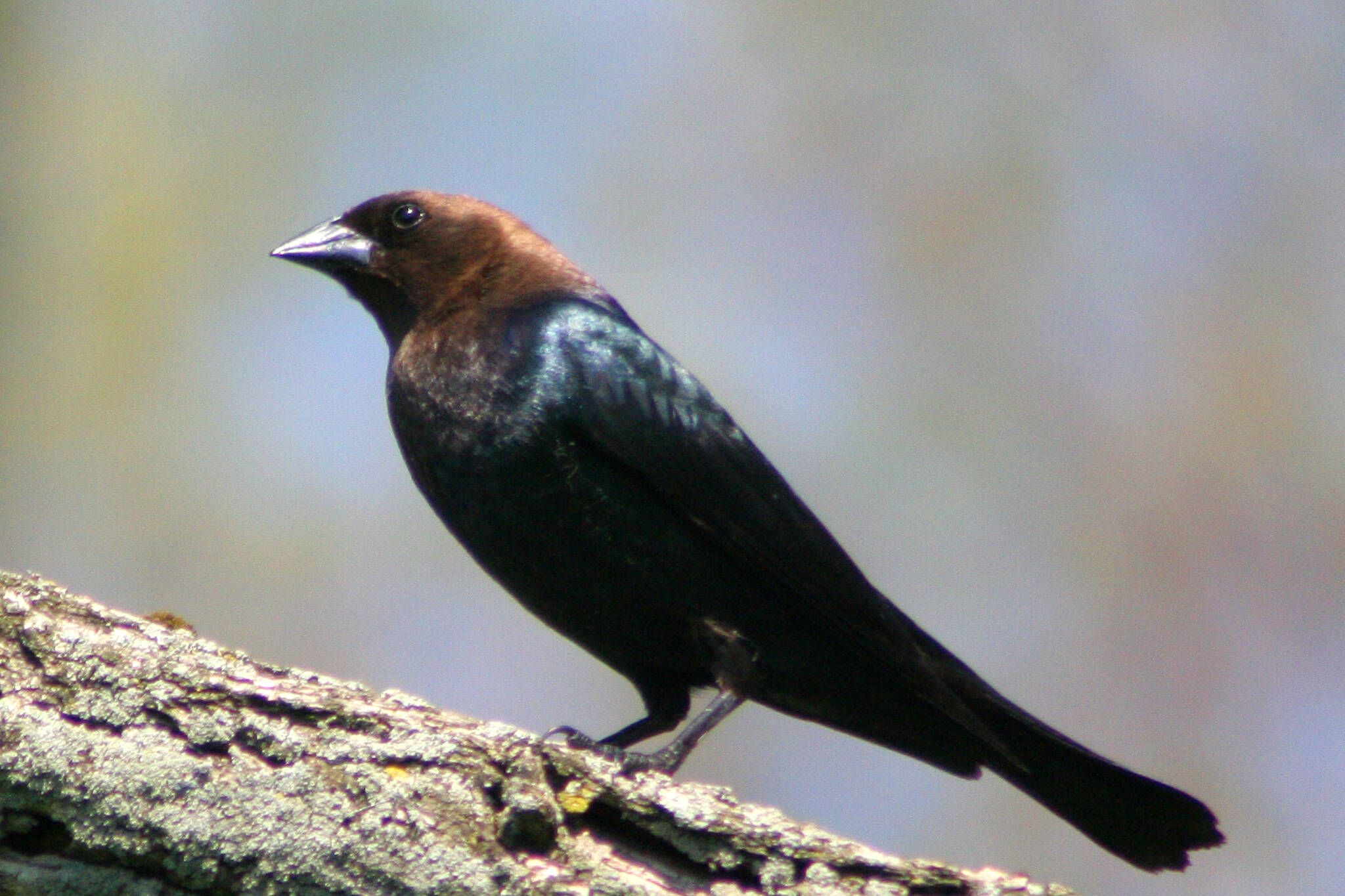By Mary F. Willson
Infanticide refers to the intentional killing of babies and sometimes very young juveniles. In general, infanticide is typically not predation or cannibalism; the principal reason for murdering babies is not for eating them, although that might occur incidentally at times. Regular infanticide occurs in many animal species, for a variety of reasons — humans have a long history of this practice, but that’s not part of this essay. In addition, some birds habitually destroy the eggs of other birds, either puncturing them or tossing them out of the nest.
Some regular infanticide and egg-destruction occurs between species. Perhaps the best-known for this habit are birds that are brood parasites, laying their eggs in the nests of other species, so the hosts rear the interloper’s chicks. Brood parasitism is often accompanied by destroying the host’s eggs or chicks by the adult parasite. Adult shiny cowbirds in South America puncture or remove host eggs, and adult brown-headed cowbirds in North America often remove one or two host eggs when they put their own egg into the host nest. Cowbird eggs require shorter incubation than the host eggs, so (if the timing is right) they hatch ahead of, or at least at a bigger size, than the host chicks. Not only can the larger cowbird chicks out-compete the host chicks for food deliveries, they may push unhatched host eggs out of the nest.
In some cases, it’s the parasite’s offspring that do the destruction. North American cuckoos sometimes become brood parasites, possibly in response to caterpillar outbreaks that allow well-fed female cuckoos to produce extra eggs, which they lay in other birds’ nests. These cuckoo chicks may push their nest-mates out of the nest.
The European common cuckoos, however, specialize in brood parasitism. Their eggs have a very short incubation time (because they’ve already incubated for a day inside the mother!), so cuckoo chicks hatch at a bigger size than their nest-mates. Soon after hatching, the cuckoo chick starts evicting any other eggs or hatchlings in the nest: one by one, it backs up to each one, loads it onto a hollow on the back, and moves to the edge of the nest to dump the doomed host offspring off the edge—all of them! This reportedly can somehow even take place while the host parent is sitting in the nest! The urge to evict everyone else apparently disappears by the time the cuckoo chick is about four days old, but by then there is nobody else left anyhow.
Honeyguides of Africa and Asia are best known for raiding bee nests and leading other consumers to the treats of honey and larvae in those nests. But they are also brood parasites with serious infanticidal behavior. For instance, the African greater honeyguide parasitizes the nests of cavity-nesting birds. In the darkness of these nests, even before the honeyguide chicks open their eyes, they murder their nest mates with deadly hooks on the tips of their bills, biting and shaking the victims until they are incapacitated and then dead.
Other cases of regular infanticide occur between members of the same species. Infanticide by males has been reported for many species of carnivorous mammals and primates. Male lions often kill young kits in the process of taking over a pride of females; the females then become ready to mate again and the new males become fathers. Similarly, in the mating season, male bears may kill cubs and even one-year-old juveniles; removal of those maternal duties allows the erstwhile mothers to come again into heat, and the males get more mating opportunities.
Chimpanzees seem to be a rather aggressive bunch of primates. Males are known to kill infants so they can mate with the deprived females. But even female chimps get into the infanticide business. Apparently this happens when foraging is limited and neighboring females start to invade the foraging area of a resident group. The resident females may then murder the infants of the intruders, in attempts to drive out the invaders.
Infanticide also occurs among members of the same family. Especially when food is not very abundant, the older and bigger chicks in a nest may push their smaller siblings out of the nest, thus claiming more food for themselves. This happens in a variety of species including raptors, egrets, kittiwakes, boobies and kingfishers. Also, in a few cases, at least, hard-working parents may oust a runty chick, leaving more food for the remainder.
These, of course, are just examples of what can go on; it’s a tough world out there.
But it’s not all like that: There are contrasting cases from birds (and some fishes), in which a male behaves in a drastically different manner toward offspring that are not his own. For example, male yellow-headed and red-winged blackbirds are often polygynous; they commonly feed the chicks of their mates, especially the chicks in the nest of the primary female in the harem. But if the male of a harem is lost or experimentally removed, replacement males mate and take care of their own nestlings and may act as step-fathers to the existing broods. They may adopt them, defending but rarely feeding them, or simply be largely indifferent to them, but these replacement males are not infanticidal. Why not? Perhaps because they apparently obtain better mating opportunities with re-nesting females or females that arrive later in the season and cannily cruise around looking for territories that have had successful nestings!
• Mary F. Willson is a retired professor of ecology. “On the Trails

